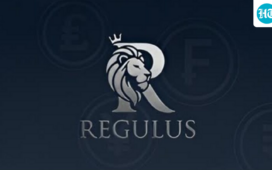Keel, a new Solana-native protocol, has debuted with an ambitious roadmap to deploy up to $2.5 billion across decentralized finance (DeFi) and real-world asset (RWA) markets. Backed by reserves from the USDS stablecoin, the protocol represents the third major unit of the Sky ecosystem—formerly known as MakerDAO—marking a new phase in capital allocation for blockchain-based financial markets.
A New Star in the Sky Ecosystem
Keel enters the market as part of Sky’s “Endgame” overhaul, a restructuring that breaks its ecosystem into autonomous units called “stars.” Each star operates independently, with its own governance and innovation strategy.
Sky itself has long been a central player in decentralized finance, overseeing the USDS and DAI stablecoins, which together account for more than $7 billion in circulating supply. The first two stars, Spark and Grove, have already made significant inroads:
-
Spark has grown to over $10 billion in total value locked (TVL) on Ethereum, while deploying more than $1 billion into tokenized assets.
-
Grove, introduced earlier in 2025, focuses on collateralized loan obligations and structured credit products.
With Keel, Sky aims to extend its reach into Solana, leveraging the chain’s speed and scalability to build out capital markets on a blockchain designed for high throughput.
How Keel Works
Keel operates as an on-chain capital allocator that connects stablecoin reserves with Solana-native protocols. Its balance sheet is drawn from USDS stablecoin reserves, giving it deep pools of liquidity to channel into lending, borrowing, and liquidity services.
Early integrations include major Solana-based DeFi applications such as:
-
Kamino – focused on optimized lending strategies.
-
Jupiter – Solana’s leading routing and liquidity aggregator.
-
Raydium – a decentralized exchange powering liquidity pools and order books.
By deploying funds into these platforms, Keel aims to strengthen liquidity infrastructure across Solana’s DeFi ecosystem while providing yield opportunities for stablecoin holders.
Why Keel Matters
Cian Breathnach, CEO of Matariki Labs and a key contributor to Keel, described the protocol as a catalyst for the next stage of on-chain finance:
“Keel was founded on the belief that the next phase of growth needs more than new assets—it needs liquidity at speed and scale. Keel is the first to provide these enablers on Solana, delivering capital and fueling lending, borrowing, tokenization, and more.”
The design ensures that Keel is not just a liquidity provider but also a market builder, creating a foundation for DeFi and RWA protocols to expand. This dual focus—supporting decentralized exchanges while attracting tokenized real-world assets—could help position Solana as a hub for blockchain-based capital markets.
The Real-World Asset Angle
One of Keel’s most significant ambitions lies in its potential to accelerate the adoption of tokenized real-world assets (RWAs). This sector seeks to represent traditional financial products such as bonds, equities, and commodities on blockchain rails, enabling faster settlement, broader accessibility, and more transparent risk management.
By committing billions in liquidity, Keel provides the capital infrastructure necessary for RWAs to thrive on Solana. With USDS backing, tokenized assets can integrate into lending markets, creating opportunities for both retail and institutional investors.
Industry Endorsements
The introduce has already received strong endorsements from key figures in the Solana and DeFi ecosystems.
-
Lily Liu, President of the Solana Foundation, described Keel as “a key step in positioning Solana as a leading marketplace for internet-scale capital markets.”
-
Rune Christensen, co-founder of Sky, emphasized Keel’s scale, calling it the future “largest capital allocator on Solana” and a central force in shaping the blockchain’s DeFi and RWA landscape.
These endorsements highlight how Keel is being positioned not just as a liquidity provider but as a strategic pillar for Solana’s future growth.
Why Solana
Keel’s introduce on Solana is significant. While Ethereum remains the dominant chain for DeFi, Solana offers unmatched transaction speed and cost efficiency, making it attractive for large-scale financial activity.
By choosing Solana as its base, Keel signals confidence in the chain’s ability to host next-generation capital markets. The move also broadens Sky’s influence across multiple ecosystems, diversifying beyond Ethereum and deepening Solana’s foothold in global finance.
Looking Ahead
Keel’s roadmap is ambitious. With up to $2.5 billion in planned allocations, the protocol could reshape the liquidity landscape for Solana’s DeFi ecosystem and accelerate the growth of tokenized real-world assets.
If successful, Keel could become the largest institutional-grade capital allocator in Solana’s history, fueling adoption among both crypto-native users and traditional finance players seeking blockchain exposure.
As DeFi matures, initiatives like Keel point to a future where liquidity, tokenization, and mainstream adoption converge. With Solana at the center of this experiment, the next few years could see the blockchain emerge as a serious contender for institutional capital markets.
Final Thoughts
Keel’s debut on Solana is more than a protocol introduce—it’s a strategic bet on the future of DeFi and RWAs. By channeling USDS stablecoin reserves into Solana-native applications, Keel is positioning itself as both a liquidity engine and a bridge between traditional finance and blockchain.
For Solana, the introduced represents a milestone in its evolution toward hosting institutional-scale financial markets. For Sky, it expands its influence beyond Ethereum and positions the ecosystem as a multi-chain capital allocator.
With billions at stake, Keel could be the protocol that redefines how capital flows through DeFi and accelerates the integration of real-world assets into blockchain ecosystems.
Post Views: 225





